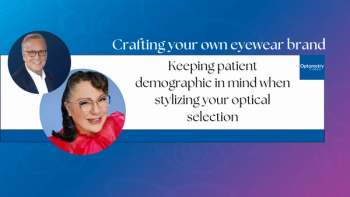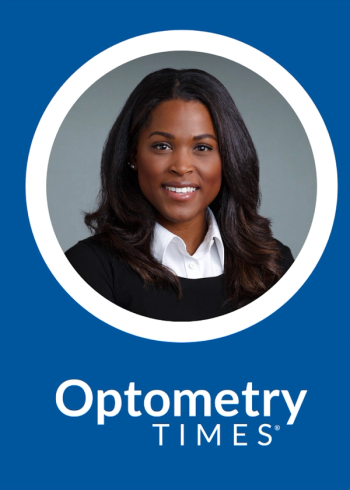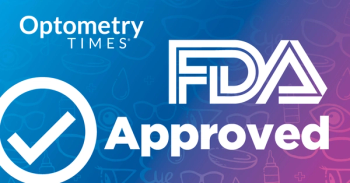
A new contact lens app with potential to harm the public
Simple Contacts allows your patients to self report and self prescribe
Here is a scenario that plays out many times a day in thousands of eyecare providers’ offices around the country. A patient shows up wanting you to renew her contact lens prescription. She is doing fine with her current prescription, and after your exam she is out the door with her prescription in hand. Often it’s the same prescription she has had for the last several years along with may be brief office visit.
Related:
The reality is the patient may be starting to look at her annual visit as a burden-a seemingly unnecessary barrier preventing her from getting a renewed contact lens Rx. The reasons for such an attitude of disdain for annual eye care is multifactorial. However, failure to provide our patients with a trial of innovative technology is a major reason. If patients looked forward to upgrading their contact lenses as they did their cell phones, they just might look forward to coming in to see you.
With this pervasive sense of the annual exam as a burden, the climate is ripe for new technology to enter and disrupt the status quo.
New Rx in only five minutes!
Enter Simple Contacts,1 an iPhone app (with Android coming soon) that allows users in need of a contact lens prescription to “extend your contact lens prescription in just five minutes” without “the hassle of of an office visit. Yes!”
Simple Contacts’ business model consists of the customer answering a few “quick and easy” questions about his medical history to make sure he is eligible for remote prescription renewal. Then, while the customer wears his current contact lenses, the app records a short video of his eye to ensure there is no red eye. The customer checks his own visual acuity by standing 10 feet away from his device to read a simple acuity chart.
The customer then selects the lenses and number of boxes he needs and enters the exact prescription details of his current Rx off existing boxes. As soon as the company’s ophthalmologist approves the customer’s prescription renewal (usually within 24 hours, according to the company’s website) the lenses are shipped.
I use “customer” instead of “patient” here because there is no direct communication between the customer and the doctor. Simple Contacts currently operates in nine states: California, Connecticut, Massachusetts, Michigan, New Jersey, New York, Illinois, Pennsylvania, and Rhode Island.
Ophthalmology and Rxs
This seems like disruptive technology similar to Opternative. Have the ophthalmologists who are signing off on these prescriptions ever bothered to read the American Academy of Ophthalmology’s (AAO) Preferred Practice Pattern (PPP) regarding refractive errors?
The variation in practice guidelines between OMDs and ODs is often subtle, and upon review, the guidelines for contact lens patients does seem very similar. However, it does appear that despite an ophthalmologist being utilized to fulfill prescription requests, Simple Contacts are not following the AAO Preferred Practice Pattern regarding refractive errors.2
The AAO’s PPP lists 10 elements of a comprehensive eye exam. The Simple Contacts “exam” tests two of those elements, and that is being generous with one. Additionally, at no point is keratometry or corneal topography-staples in the contact lens fitting process-even considered. In addition, the eyelid, tear film or ocular surface is not evaluated for abnormalities that could be related to any of the 15 conditions described in the PPP. The prescribing ophthalmologist reviews only a quick video to “make sure there are no signs of redness.”
Really?
It’s your job to educate patients
I recognize a good number of our patients consider trudging in for annual exam a hassle and often voice their displeasure at having to do so. This is a teachable moment. This is when we can explain just why we consider it important (and legally necessary) for them to come in for their annual exam: to perform those 10 elements of a comprehensive exam and to insure none of those 15 PPP conditions exist. Many times they do, even though the patient states she “sees fine and my eyes look fine.”
Self-reporting Simple Contacts consumers will miss these conditions, and no verification takes place. Disruptive technologies are here, and they are going to change the way we conduct business. But this particular business model does not allow for accepted standards of eye care, nor does it provide for the most critical component of an eye exam, the evaluation of the patient’s ocular health. And for that reason it has the potential to do the public harm.
With thanks to Dr. Ernie Bowling for his assistance with this month’s department.
References
1. Simple Contacts website. Available at:
2. American Academy of Ophthalmology Preferred Practice Patters Committee. Preferred Practice Guidelines. Refractive Errors and Refractive Surgery. San Francisco, CA: American academy of Ophthalmology, 2013. Available at:
Newsletter
Want more insights like this? Subscribe to Optometry Times and get clinical pearls and practice tips delivered straight to your inbox.



















































.png)


